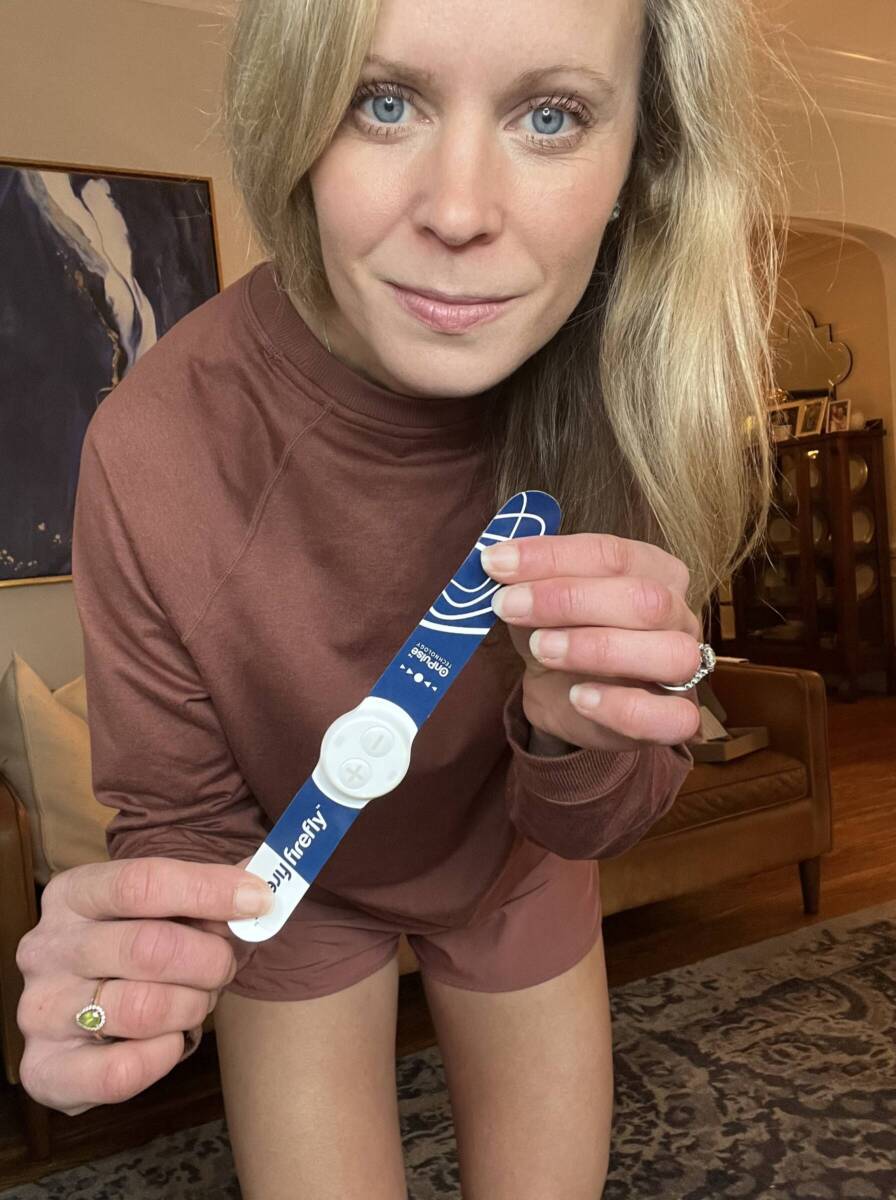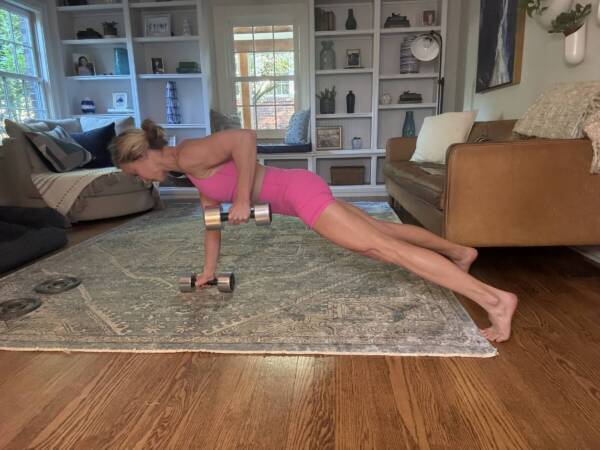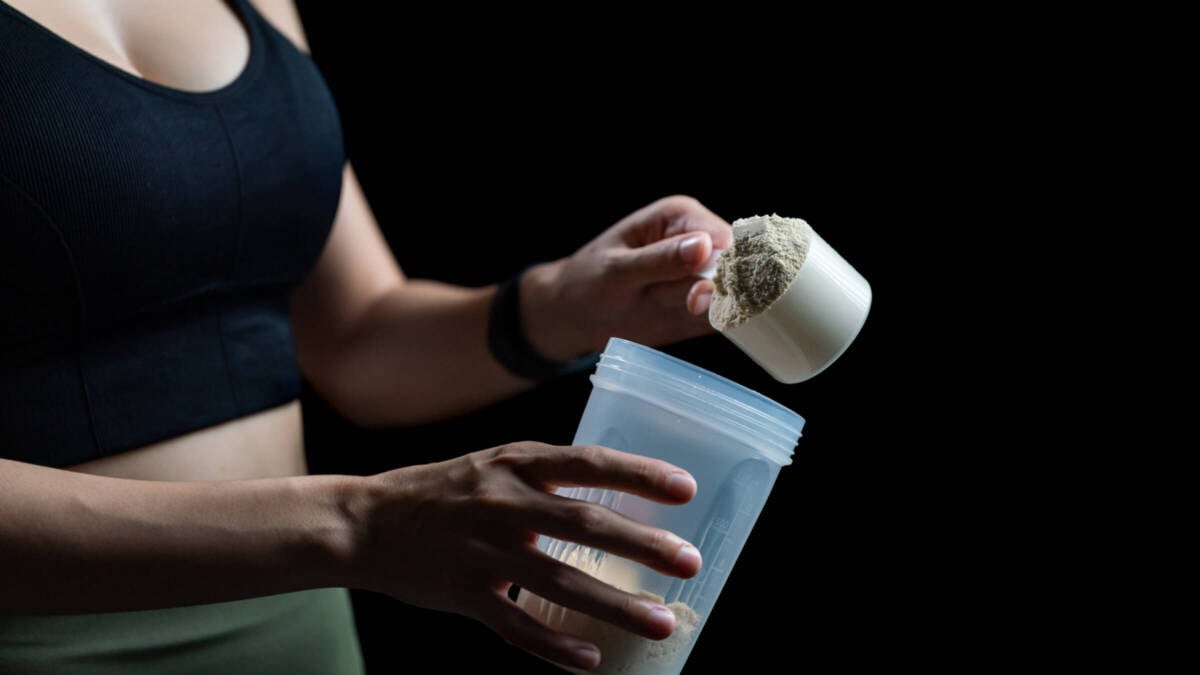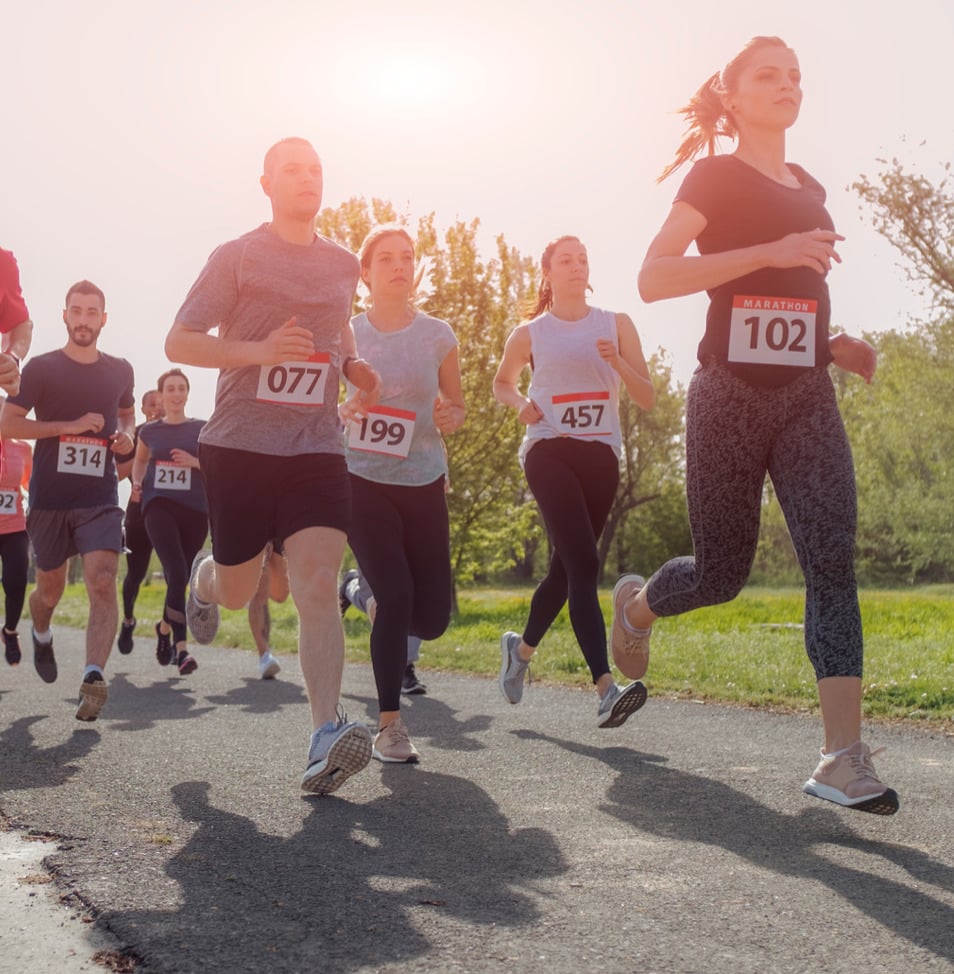Firefly Recovery Review: Does It Relieve Sore Muscles?
There always seems to be a shiny new recovery tool that promises to relieve sore muscles fast. And, honestly, I’m game to try any of them. So, when Firefly Recovery asked me to try the recovery tool that pro runners Molly Seidel and Galen Rupp swear by—I said enthusiastically, sign me up!
The name of the game in all these tools to help amplify your workout recovery and relieve sore muscles is increasing blood flow.

Our blood works magic in our recovery from running. Improved blood flow supplies our sore and damaged muscles with the nutrients and oxygen needed to spur healing. Increased blood flow also carries away the muscle’s waste byproducts back to the kidney. This leads to:
- faster recovery times
- less muscle soreness
- stronger tissues, and
- an ability to train harder.
Table of contents
- Firefly Recovery Review
- FAQs about the Firefly Recovery Straps
- Does Firefly work for recovery?
- Who owns Firefly Recovery?
- How does Firefly Recovery work?
- Is Firefly Recovery better than a TENS unit?
- Is Firefly Recovery better than compression boots?
- What does the science say about Firefly Recovery?
- How long do Firefly recovery straps last?
- How long should you use Firefly Recovery?
- How do you use Firefly Recovery?
- Firefly Recovery Best Practices
- Do you see benefits if you use Firefly for less than an hour?
But a lot of these recovery tools make promises that their mechanisms can’t cash. Honestly, I have not felt noticeable improvements from many of them including an at-home cupper, some massage guns, and compression boots. I’ve found the best benefits with massage, some light yoga and mobility, foam rolling, and a good ol’ Epsom salt bath. (And, also EATING).
The Firefly Recovery straps are a different ball game. Firefly is a portable recovery device used by professional athletes. It increases blood flow by 400 percent by stimulating the perineal nerve in your leg. This can reduce recovery time by 72 hours to one day. I road test them and let you know how I felt!
Firefly Recovery Review
Firefly Recovery Device Description:
The Firefly Recovery device is a portable strap that sticks under the knee and sends electrical pulses through the peroneal nerve in your leg to increase blood flow. Users will feel a slight “zap” in their leg and their foot with light kick (or flutter). By wearing the firefly for one to four hours after exercise, you can increase recovery time by up to three days and dramatically get rid of muscle soreness.
Specs:
- A Firefly start pack includes 2 pairs (4 total Fireflys) and 1 pair of knee straps.
- Each Firefly device delivers 30 hours of recovery treatment (suggested recovery time of 1-4 hours based on training intensity).
- There are 7 intensity levels.
- The knee straps help to keep Firefly in the optimal position for maximum benefit.
- Price: $95 (marked down from $110)
My Road Test of Firefly Straps:
I was surprised by how easy it was to put the Firefly straps on. And when I heard you had to wear it for over an hour to see noticeable benefits, I scoffed. I thought it might be difficult to commit to that time, or uncomfortable.
But, I was surprised that it wasn’t difficult to do that either. I tried them after my first track session of mile repeats this marathon cycle and an 18-mile long run with a 2-mile pick-up. I had no trouble putting them on with the straps, pulling on some Vuori joggers over them, and going about my day. When moving around or writing on my computer, I forgot about the pulses going through my leg.
But did Firefly get rid of sore muscles? Yes, the Firefly straps helped my recovery so much in my first road tests that they have become a part of my regular recovery after my long runs.
Recently, I started running 7 days a week with a 7-mile recovery run after my 20+ milers on the weekends. I have been pleasantly surprised by how fresh my legs feel on these runs. And I think the Firefly straps are a main reason.
Truly, the Firefly Recovery seems to help get rid of muscle soreness fast.
How does Firefly compare to other recovery tools?:
So how does the Firefly compare to the other recovery tools I’ve tried?
I would say this:
- The TENS unit is best for targeting a tight muscle or even a mild strain.
- A massage gun and foam roller are overall a great recovery tool for loosening up muscles (and feels good).
- Compression boots feel good but don’t have noticeable improvement in recovery—just suspected.
- The cupper is good for treating a mild strain but you can end up doing more harm than good if you don’t know what you’re doing. So, I suggest having a healthcare professional help you.
Pros of the Firefly Straps:
- Noticeable recovery benefits!
- Easy to use
- Portable
- Stimulates blood flow in the whole leg
- No wires or charging to worry about
Cons of Firefly Straps:
- Have to wear it for at least an hour to see recovery benefits
- Can be a bit uncomfortable
- Straps only last for 30 hours
- Cannot target particularly sore areas
Firefly Recovery Review Bottomline:
I recommend the Firefly tool for anyone who wants to amplify their recovery time so they can rebound from workouts and races faster.
FAQs about the Firefly Recovery Straps
Does Firefly work for recovery?
Yes, studies show that Firefly works for recovery by increasing blood flow which creates a slight foot flutter which then increases blood flow by a drastic 400 percent. This can reduce recovery time from 3 to 1 day!
Who owns Firefly Recovery?
Anthony Kjenstad is Firefly Recovery’s CEO and Founder.
How does Firefly Recovery work?
By stimulating the peroneal nerve (a nerve in your leg) firefly increases blood flow. The stimulation activates a small twitch in your foot that increase blood flow from your feet to your heat. This means more fresh blood and oxygen to reduce lactic acid and soreness, eliminate toxins, and keep muscles flexible.
The increase of 400 percent blood flow reduces recovery time from 72 hours to 1 day.
(Check out my Instagram reel on how to use the Firefly straps).
Is Firefly Recovery better than a TENS unit?
Both the Firefly tool is a Neuromuscular Electrical Stimulation (NMES) unit and a TENS unit is a Transcutaneous Electrical Nerve Stimulation device. They both use electrical stimulation therapy to enhance recovery and relieve sore muscles fast. However, a NMES unit sends electrical pulses through the nerve and a TENS unit sends electrical pulses through the muscles.
According to Firely: “The Firefly is a modified NMES that stimulates a nerve vs. a muscle, it is not a muscle stim or TENS unit. Stimulating the peroneal nerve causes muscles to contract and to increase blood flow. Stimulating a muscle (with a TENS unit) for extended periods of time can cause muscle fatigue. The firefly safely avoids muscle fatigue that can be caused by TENS.”
Specifically, here are the two main differences between these recovery tools.
- Muscle vs. nerve stimulation: TENS machines electrically stimulate muscles. After a short amount of time, the muscles can fatigue in which the recovery process is over. Also, TENS units target specific muscle groups instead of the whole leg. Firefly Recovery, conversely, stimulates the perineal nerve which does not fatigue and increases blood flow through the entire leg.
- Bulky vs. portable: TENS units or E-Stem units can be bulky and have a lot of wires. The Firefly tool is a small sticker that fits below your leg, under your clothes, so that you can wear them as you do other things.
Is Firefly Recovery better than compression boots?
Personally, I noticed my legs feel more recovered after using the Firefly straps post-workout than using compression boots. Studies show that pneumatic compression boots can increase circulation and speed up recovery but time scales aren’t specified.
According to Firefly, their recovery tool moves 3 times more blood than compression boots. Their athletes notice a bigger boost in recovery than using compression boots for 20-30 minutes after workouts.
The benefits of compression boots are that they can have a relaxing effect (they feel better than the Firefly zap) and you only wear them for about 20 minutes or so. However, you can’t move around with them, and many don’t cover the full leg.
What does the science say about Firefly Recovery?
Numerous clinical studies support that Firefly recovery is an effective fitness recovery tool.
- One study shows that Firefly increases microcirculation better than compression boots for fitness recovery.
- Another study finds that Firefly can help rehab leg injuries.
- One study shows that NMES like Firefly improves recovery 24 hours after strenuous workouts.
- Research shows Firefly helps rehab injuries by increasing microcirculation better than acupuncture.
- Other research suggests NMES devices like Firefly decrease muscle soreness better than compression socks.
- This study shows that using a Firefly after a HIIT session doesn’t impair physiological adaptations.
- This study has implications for how devices like Firefly can help with blood flow during air travel (important for preventing deep vein thrombosis).
How long do Firefly recovery straps last?
Each Firefly device provides 30 hours of fitness recovery treatments, or 6-12 sessions of recovery time based on intensity. There are 7 intensity levels.
How long should you use Firefly Recovery?
It is recommended to wear the Firefly for 1 to 4 hours at a time. If you use the knee straps, you can carry on with your normal daily activities without the device falling off.
How do you use Firefly Recovery?
The Firefly tool has detailed instructions for use on their website but in short, you apply the circular control button on the bony part of the outside of your knee (fibular head). You wrap the long strap around the back of your upper calf.
- You hold the plus button down to turn it on and then press the + or – button to adjust the intensity.
- The zap should make your foot flutter. That’s how you know it is working. The electrical stimulation should be noticeable but not uncomfortable.
- You can slip on the cloth straps over the sticker strap to secure it in place and go about your day.
- Hold down the + button to turn off the Firefly Recovery device.
Firefly Recovery Best Practices
To get the most out of your Firefly Recovery unit, follow these guidelines:
- The sooner you use Firefly after a workout the better as you can more quickly flush out lactic acid and avoid delayed onset muscle soreness (DOMS).
- Pre-workout/warm-up do a 30-minute session
- Post workout/training do a 1-4 hour session soon after your workout
- Use during travel for the duration of travel
- Use with knee straps
- The foot flutter indicates it is working
- The pulse should not be intense or painful—just noticeable
Do you see benefits if you use Firefly for less than an hour?
Firefly has not tested the device for under an hour so they do not have clinical data. Anecdotally, they work with thousands of athletes who share how they use it and may see a benefit from just 30-45 minutes. It is recommended to use Firefly for one to four hours per session.
Have you tried Firefly or will you?






